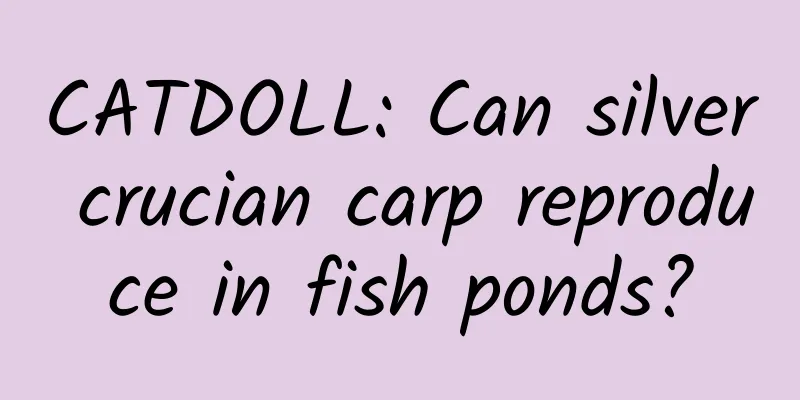CATDOLL : CATDOLL: How can we cultivate mealworms on a large scale artificially?

How should mealworms be cultivated on a large scale artificially?Yellow mealworms, also known as breadworms, were introduced to China from the Soviet Union in the 1950s for breeding. Dried mealworms contain 30% fat and more than 50% protein. They also contain macroelements such as phosphorus, potassium, iron, sodium, aluminum, and a variety of trace elements. Since dried mealworm larvae contain about 40% protein, pupae contain 57%, and adults contain 60%, they are known as "protein feed treasures". The feeding equipment for mealworms is simple. It can be raised with basins, cans, wooden boxes, paper boxes, brick pools and other containers, but the inner wall is smooth and the container is up to 15 cm deep to prevent insects from escaping. The inner frame of the adult wooden box should be fixed with plastic dust-proof film or transparent tape to prevent adults from crawling and laying eggs. In addition, a screen net must be installed at the bottom. The mesh aperture is about 3 mm, so that the eggs laid by adults can leak out in time and will not be eaten by adults. A layer of egg-collecting paper should be placed under the screen net to facilitate egg collection. If it is large-scale breeding, a certain number of 30×40x15 cm wooden boxes can be made according to needs, and wooden box racks can be set up in the insect breeding room to stack the wooden boxes layer by layer. Mealworm farming is currently mainly distributed in Shandong, Henan, Gansu and other places in China. At present, most of them are exported to developed countries abroad, mainly for protein extraction and breeding. It has many uses and can be made into edible snacks, feed, and deep processing to extract protein and other food additives. It can also deal with a large amount of agricultural planting waste such as tail vegetables, and insect feces can be made into organic fertilizer, which is an economic insect. Drying mealworms is an important part of the production process, and its purpose is to facilitate storage. Traditionally, the drying cycle of mealworms is relatively long. When dried at high temperatures for a long time, mealworms tend to turn black, stop puffing, become smaller in size, and have a dull color, which seriously affects their quality. The suitable temperature for raising mealworms is 25~30℃ and the space humidity is 60%. If the temperature and humidity are higher or lower than the above standards, the growth and development of mealworms will be affected to a certain extent. During the feeding process, corresponding measures can be taken according to the specific situation. , adjust and control the temperature and humidity. In view of this situation, we finally developed a drying equipment suitable for mealworms, the universal mealworm microwave drying equipment, which is currently widely used in the fields of mealworms, black mealworms, and worm drying. Microwave drying has the significant advantages of "high quality, high efficiency, energy saving and environmental protection". Microwave heating of materials is instantaneous and only heats the materials, reducing heat loss. At the same time, the output power is adjustable and controllable, and there is no waste heat phenomenon, which is conducive to realizing the needs of automated continuous production. Tenebrio molitor, also known as mealworm, is native to North America. It was introduced from the Soviet Union and grew up in Qidong, China in the 1950s. Dried mealworms contain 30% fat and more than 50% protein. Let's learn how to raise mealworms and learn about the methods of raising mealworms. 1. Breeding equipment The feeding equipment for mealworms is simple. It can be raised with basins, cans, wooden boxes, paper boxes, brick pools and other containers, but the inner wall is smooth and the container is up to 15 cm deep to prevent insects from escaping. The inner frame of the wooden box for adults should be fixed with plastic film or transparent tape to prevent adults from crawling and laying eggs. In addition, a screen net must be installed at the bottom. The mesh size is about 3 mm, so that the eggs laid by adults can leak out in time and will not be eaten by adults. A layer of egg-collecting paper should be placed under the screen net to facilitate egg collection. If it is large-scale breeding, a certain number of 30×40x15 cm wooden boxes can be made as needed, and wooden box racks can be set up in the insect breeding room to stack the wooden boxes layer by layer. 2. The breeding temperature and humidity of mealworms The suitable temperature for raising mealworms is 25~30℃ and the space humidity is 60%. If the temperature and humidity are higher or lower than the above standards, the growth and development of mealworms will be affected to a certain extent. During the feeding process, corresponding measures can be taken according to the specific situation. Adjust and control the temperature and humidity. 3. Management of mealworms in winter and summer In winter, the temperature of the breeding room is raised by heating to about 25℃. In the hot summer season, ventilation and cooling are required, and the larvae are removed to reduce the density to avoid increasing the temperature in the population; direct sunlight is prevented. If active measures are not taken every summer, a large number of mealworms will die. 4. Precautions for mealworm breeding (1) The breeding room must be away from natural enemies (such as mice, ants, etc.). Therefore, when feeding mealworms, not only should there be measures to prevent escape, but also good anti-predation equipment. (2) The growth of larvae depends on the supply and quality of feed. The principle of feeding is to feed in small amounts several times, alternating between feeding with a variety of feeds. The thickness of the larvae in the breeding equipment should not exceed 3 cm. It is not advisable to feed more green feed to newly hatched adults. (3) Dead pupae and adults should be removed in time to prevent rotting and deterioration, and breeding of pathogens. It is not advisable to feed moldy feed. The artificial breeding technology of yellow mealworms can refer to the following method: after moving the newly hatched larvae to the insect breeding box, immediately sprinkle a thin layer of sterilized bran. As the larvae molt and grow, gradually increase the amount of concentrate feed and green feed. Feed less or no feed during the molting period. The daily feed amount is based on when the larvae have eaten the feed in the box at night. Feed enough in the morning and evening, and supplement it at noon. In the early stage, concentrate feed is the main feed, supplemented by green feed, and in the later stage, green feed is the main feed, supplemented by concentrate feed. If you want to breed yellow powder worms, you need to find some pots, wooden boxes or boxes, and then pile them up, and the depth should be controlled. After a little deeper, use plastic film, and then reinforce it. Slowly grind and roll it, it's very convenient, and it's also very easy to breed. The temperature should be controlled at around 30℃, and it may be better to tremble. When raising mealworms, you must pay attention to temperature management and humidity management, as well as food feeding and the reproduction of other bacteria. How to Breed MealwormsTips for pet friends By Huang Ziling Mealworms are a kind of high-protein insect feed, also known as yellow mealworms and high-protein worms. They are the main meat feed for domestic birds. The breeding of mealworms is relatively simple. First, buy the mealworms and put them in a smooth basin, then put some wheat bran and clean vegetable leaves. It is best to cover the basin with a ventilated and breathable gauze to prevent geckos from stealing at night. Put the basin in a cool place. After a period of time, the mealworms will turn into white pupae after shedding their skin several times. After a few days, they will transform into black hard-shelled insects. At this time, they can reproduce. At this time, it is best not to turn over the contents of the basin, and put a layer of vegetable leaves for the insects to lay eggs. When you see the wheat bran in the basin wriggling, the mealworms have hatched. |
<<: CATDOLL: What is used to disinfect rural pig pens?
>>: CATDOLL: There are a lot of big earthworms in my vegetable garden. What should I do?
Recommend
CATDOLL: Where can I buy Jinchan in Jincheng?
1. Where can I buy Jinchan in Jincheng? There doe...
CATDOLL: Catfish is also called catfish. How to manage it well when breeding it?
Catfish is also called catfish. How to manage it ...
CATDOLL: How to raise the red worms if you can't use them all (How to raise the red worms you bought if you can't use them all)
1. What is the simplest way to raise red worms? 1...
CATDOLL: What are the types of full-house feeding models for meat ducks?
What are the types of full-house feeding modes fo...
CATDOLL: Jellyfish breeding rack?
1. How to make a jellyfish breeding rack? How do ...
CATDOLL: Do you need to add oxygen all the time when raising tropical fish?
There is no need to add oxygen all the time when ...
CATDOLL: Treatment and prevention measures for foot-and-mouth disease in chickens
Foot-and-mouth disease is a common poultry infect...
CATDOLL: Key points of indoor earthworm breeding technology (What are the key points of indoor earthworm breeding technology)
1. The cleanest way to raise earthworms. How to r...
CATDOLL: In-depth analysis of Tianjin Aonong Feed Co., Ltd.: industry prospects and core competitiveness
Feed production is an indispensable link in China...
CATDOLL: What are the countermeasures for redness and fever on pigs?
What are the countermeasures for redness and feve...
CATDOLL: Will newly born bees eat sugar? (Will newly born bees die if they eat sugar?)
1. Do the newly separated bees need to be fed sug...
CATDOLL: When are crabs in Bohai Sea plump?
1. When are crabs in Bohai Sea plump? Wild Bohai ...
CATDOLL: Can guppies be kept with other fish?
Can guppies be kept with other fish? It’s not tha...
CATDOLL: How to manage asparagus in the first year (How to manage asparagus in the first year)
1. How to cut one-year asparagus seedlings? Once ...
CATDOLL: Taihu whitebait was once introduced to 21 provinces, so why does no one dare to raise it now?
Taihu whitebait was once introduced to 21 provinc...









